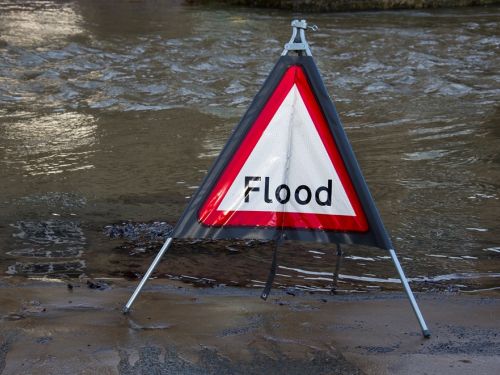In this edition, our Chair Pat Doody looks at the importance of connectivity across multiple areas of infrastructure from the physical to the digital, the electrical to the liquid, and gives insight into new and evolving projects and schemes which will help get the economy back on track in a greener, more sustainable way. Watch Pat's short introductory vlog here.
In Greater Lincolnshire, the economic effect of the pandemic has been profound. Almost a third of workers have been furloughed and investment plans have been put on hold. Meanwhile, firms are still facing uncertainty as the exit from the Single Market fundamentally reshapes many of the region’s trading and labour market relations. But businesses are already adapting to new ways of operating, transitioning to online platforms and investing in digital solutions to keep staff and customers connected. We have experienced several years’ worth of adoption of technology in just 12 months and this will change our commuting patterns and our business behaviour, and pose a challenge to our high streets. The business landscape will never return to its previous form.
Infrastructure is only one segment in the road to recovery, but a fundamental one all the same. It covers wide-ranging sectors from structural to digital, and from energy to water. The economy needs reliable infrastructure to connect supply chains and efficiently move goods and services across borders. Infrastructure needs to connect households across urban and rural areas to higher-quality opportunities for employment, healthcare and education. Clean energy and public transport in turn reduce greenhouse gases and the same economic logic applies to broadband networks, water systems, and energy production and distribution. In recent round tables we've held with business leaders across many sectors, the feedback unanimously was for infrastructure - across road, rail, and broadband.
Our ambition is to develop the infrastructure needed to support business growth, connect people, and be prepared for future growth and challenges. The lockdown, implemented in response to Covid-19, significantly changed the way we move around. Use of motor vehicles fell by 65%, buses by almost 90% and trains by 95%. At the same time cycling became much more popular, with usage peaking at 2.5 times the baseline values at the end of May last year.
Government has had to heavily subsidise these modes of transport, continuing doing so into 2021 while launching an expansive infrastructure programme to support the Ten Point Plan for a Green Industrial Revolution. Internet use has also increased during lockdown, with users spending a quarter of their waking day online. Digital infrastructure has generally been able to cope with this, although workers in remote areas have found it particularly hard to work from home. The ongoing changes to the way many businesses operate has placed increased importance on having fast and consistent access to digital services. We are working with partners to ensure our share of the Government's plans for a £5bn package to support UK-wide gigabit broadband roll-out, extending 4G mobile coverage to 95% of the UK, and we need to ensure the impact reaches all corners of rural Lincolnshire.
But this challenge is also our advantage and capitalises on our dispersed economy; we share with our partners a strong ambition to create a leading polycentric, productive economy. We will need to deploy place-based responses to the varied economic challenges Greater Lincolnshire faces and will deliver the Future High Street and Towns Fund bids for Greater Lincolnshire Towns. The Government’s £3.6bn Towns Fund is intended to contribute towards the drive for levelling up in the UK, building on the approach pioneered in Grimsby. We now have six towns with confirmed Town Investment Plans and are well positioned to react to emerging Government policy on infrastructure, which sets out a new long-term strategy for growth in a changed economic landscape, covering factors such as the pandemic, recently accelerated net zero targets, and our new place on the world stage as an independent nation outside the EU.
Our top infrastructure priorities for the next five years include: developing a Greater Lincolnshire Infrastructure strategy focused on place-based priorities and linked strongly to post-pandemic economic priorities; building on the recently announced funding for the Humber Freeport which includes the south bank Ports of Grimsby, Immingham and Able attracting investment and local business growth through incentives and investment opportunities; building on the successful development of the South Lincolnshire Food Enterprise Zone by developing our global ‘UK Food Valley’ concept and positioning the area as the prime location for innovative, sustainable food supply chains; building on exciting plans for local town centres through the Stronger Towns Fund; and supporting the digital uptake in business, delivering a Made Smarter Digitalisation Pilot starting with a pilot focused on manufacturing and food businesses, and establishing a partnership with Innovate UK to support businesses to invest in new technology.
And we are proud to be able to evidence these future ambitions with an enviable track record. Over the last four years, we have been instrumental in securing funding, influencing support, and supporting partners in delivering big and transformational infrastructure projects from the Humber to the Wash. Some great examples include the Immingham to Grimsby Superhighway Cycle Programme; the South Lincolnshire Food Enterprise Zone; Boston Quadrant; Access to Employment Zones; Gainsborough Growth Project; Lincoln Transport Hub; and Go Skegness Sustainable transport. To find out how these are benefitting businesses and communities across the region, visit our website here.
We have also played a pivotal role in influencing national infrastructure plans and programmes. We sat on each of the Towns Fund Boards and influenced the Midlands Engine Strategy released at the end of March. We contributed to the Government's Union Connectivity Review and provided a direct response to the national freeport consultation, resulting in a successful bid submission for the Humber Freeport. We commented on recently developed Local Transport Plans and participated in discussions on energy and utility infrastructure requirements. The LEP has also been consulted on the Levelling Up Fund and Community Renewal Fund prioritisation, highlighting links to local pipeline projects and Strategic Infrastructure Delivery Plan priorities, and we now stand poised for action across our many collaborations and partnerships as soon as we are given the green light.
Please read on for a taste of some of the developments and wide-ranging infrastructure projects under way which are bringing opportunities across our varied and highly aspirational region.
Pat Doody
Read our latest newsletter focusing on infrastructure and investment here.
_1600_800_80_s_c1.jpg)

